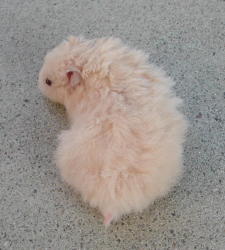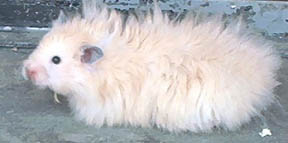Long haired Syrians were first documented in 1973, but the gene is believed to have appeared in 1972. The mutation was found in the United States in pet store animals. It was described in an article titled “Long-hair: A new mutation in the Syrian hamster” which appeared in the Journal of Heredity Volume 64, pages 236-237, 1973 by Schimke, Nixon and Connelly.
Long haired Syrians have been very common in the United States for decades. Pet stores often refer to them by the nickname “teddy bear,” and initially higher prices were charged for long haired hamsters. Over time, this has progressively changed although many pet stores still house them separately from the short haired Syrians. They are identical to short haired Syrians, though, except for the hair length and can be found in any color, pattern, or other coat type available in the species.
Description
The long hair gene affects males and females differently. Ideally males have a long coat over the entire top portion of their body although the hair on their head will be somewhat shorter. A perfect long haired male will have a lot of length over his entire back and sides. In reality, many are lacking that length over various parts of their body or in some cases are entirely lacking length in their coat.
Long haired females have a much shorter coat although it is still significantly longer than that of an ideal short haired female. Some females have tufts in various places even as youngsters, and many develop tufts or wispy areas of long hair along their rear end as they age.
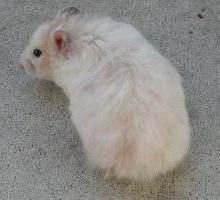
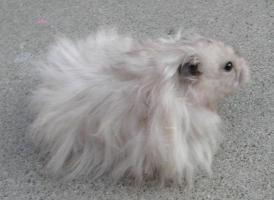
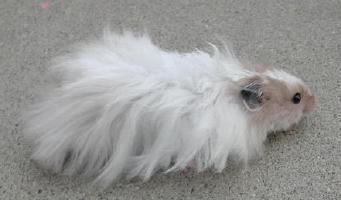
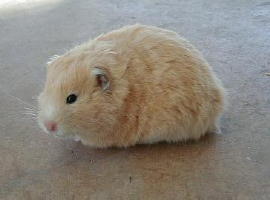
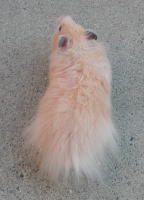
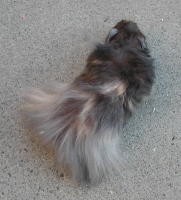
The BHA standard states:
Colour and Markings: The colour and markings shall conform to the recognised colour standard allowing for a dilution of ticking on Agouti varieties.
Fur: The fur shall be soft and very dense and evenly long over the top surface of the body, excluding the face where it shall be shorter. In general males shall have longer fur than females and allowance should be made for this.
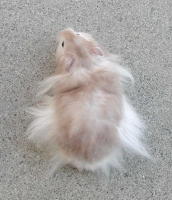
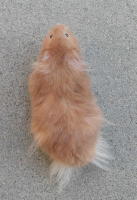
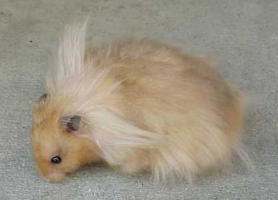
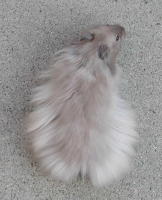
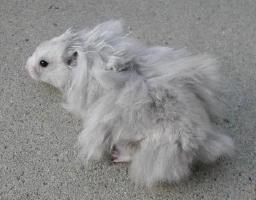
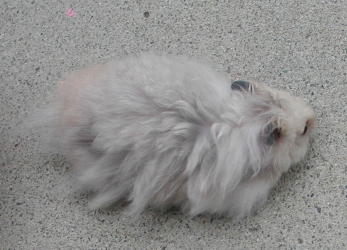
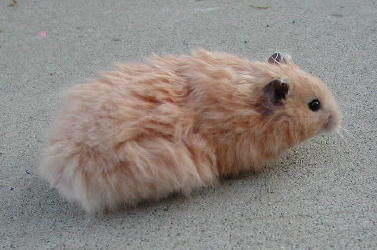
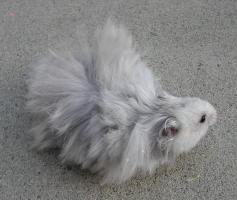
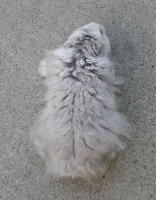
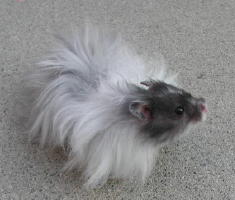
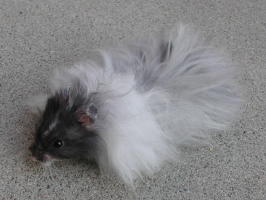
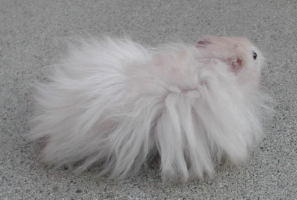
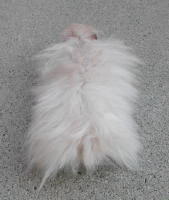
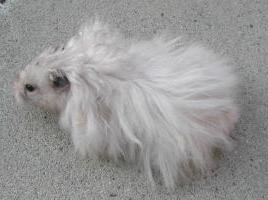
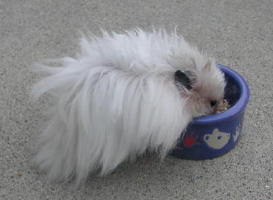
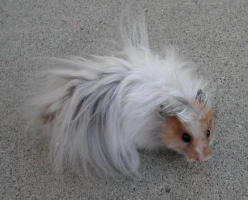
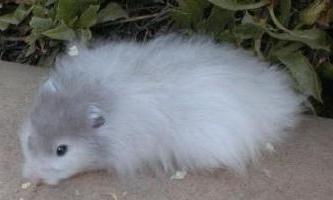
Long hair is a simple recessive gene (l). In order for a hamster to be long haired, it must inherit the gene from both parents. Two long haired hamsters, when bred together, will produce a litter of all long haired pups. A long hair bred to a short hair (who does not carry long hair) will produce a litter of short haired pups, however they will all carry the long hair gene. If those pups are in turn bred to each other, to other long hair carriers, or to a long hair, they will produce long haired offspring. Thus it is very easy to combine long hair with any other color, marking, or coat type.
It is difficult to achieve the length and evenness of hair length in male long haireds. In the rare cases that we do see good length, density is often lacking. Getting the density in that length is a challenge and can take many generations. Breeding good long haired females is much easier.
Long haired hamsters are not a good coat type choice for the novice exhibitor, or the person looking for an “easy” coat type. A truly good example of a male long haired hamster is hard to achieve, and achieving that length on a male in combination with excellent type, proper color, correct coat density throughout the length of the coat, etc. is a hard feat.
Long Hair in Combination With Other Coat Type Genes
Keeping a Long Haired male rex's coat in show condition can be quite a challenge. Choosing a good bedding for this combination is one of the more important issues. Please refer to the rex article for additional information on bedding choices for rexes. Satin can also be combined with long hair. When achieving density throughout the entire length of a male coat is already a challenge, the satin gene should be added to the equation with caution because it tends to cause the appearance of a thinner coat.
